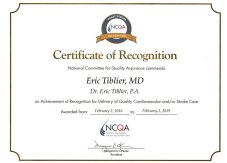Pacemaker Implantation
The majority of people who get a pacemaker can return to their regular life within a couple of days. In fact, the quality of your life will improve greatly after you get a pacemaker. Living with a pacemaker is not as challenging as it may seem.
Learn more about pacemakers by watching this video.
Whenever a pacemaker is implanted, it is perfectly normal to have pain in the area of the implantation for about a week. However, you’ll be provided medicine that will help you deal with the pain. In addition, don’t be scared if the area surrounding the pacemaker gets numb. It is perfectly normal and this numbness may last for a couple of months following the procedure. Learn more about getting a ProMRI® pacemaker installed.
Why Do I Need a Pacemaker?
Individuals who have trouble maintaining an appropriate heart rate will need to have a pacemaker implant. It will help to keep your heart pumping at an appropriate rate all day, everyday.
A lot of people who get pacemakers can begin all regular activities within a couple of days following the procedure. However, doctors will advise you not to lift anything heavy or not to lift the arm along the side of the implantation higher than your shoulders. This is nothing to worry about. It’s a preventive measure so that the leads which are put inside the heart aren’t dislodged. After you have healed entirely, you are able to raise your arm as much as you would like but you might not be allowed to do strenuous exercise or play contact sports.
Pacemaker Implant Procedure
Whenever a pacemaker implant is performed, a cut is made inside your chest, and after the pacemaker is inserted, the incision is sutured. The sutures are taken out after a few weeks, and this can be done in the physician’s office. This will be the time when the doctor will look at the pacemaker, make all the required alterations in the settings, and notify you about outside interference from home appliances and other devices. Be sure you take note of all these things as they are extremely important. If the doctor provides you with reading material, you need to take them and study them carefully.
Additionally, you will be given a card which you should carry with you at all times. The card will contain your details and data about the pacemaker. This card needs to be shown to other medical doctors and dentists when you visit them to let them know that you’ve got a pacemaker.


